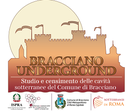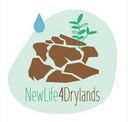Geology, Soil and territory
|
|
|
|
|
|
Bracciano Underground Project - Study inventory of underground cavities of Bracciano Municipality In Italian historical towns, human-induced sinkholes are mainly represented by networks of underground cavities of different types (i.e. quarries, caves, cisterns and hydraulic networks) constructed since ancient times to present time. In Italy, in the last decades, numerous sinkholes have occurred in urban areas due to collapse of the vaults of underground cavities; such failures are related to either natural causes (e.g. intense and prolonged rainfall) or anthropogenic causes such as losses from hydraulic networks, excavations or total lack of maintenance of hypogeal structures.
|
|
|
|
CARG Project - Geologic and geothematic cartography The CARG (Geological CARtography) project launched in 1988 involves the creation of 652 geological and geothematic sheets on a scale of 1:50,000 covering the entire national area. |
|
|
|
ESASoil Sealing Assessment and Monitoring in the Mediterranean Coastal Watershed with the aim of implementing information services on a regional scale in order to demonstrate the benefits and usefulness of information derived from Earth Observation (EO) technologies. |
|
|
|
Geological Map 585 Mondello - Island of Ustica The Island, together with a limited strip of the Sicilian coast, is shown in Sheet no. 585 “Mondello – Ustica Island” of the Geological Map of Italy on scale 1:50,000. The Ustica Island survey was based on an agreement between the National Geological Survey (which was later merged with ISPRA) and the University of Milan and was realized in 2002 thanks to the collaboration of geologists from the two organizations. |
|
|
|
The GeoSciences IR project, funded by the MUR through mission 4 of the PNRR, will create a research infrastructure for the Italian Geological Services Network to make available to regional geological services and not only the data, services and tools necessary for the performance of territorial monitoring and control functions in the various fields of Earth sciences. |
|
|
|
Ghost Cities
|
|
|
|
Digital Gravity Maps of Italy at 1: 250.000 scale
This digital mapping project is the result of a scientific collaboration between Servizio Geofisica of SUO – ISPRA, CARS - Cartography and Remote Sensing of OGS and Exploration & Production Divison of ENI. |
|
|
|
Central Apennines deformations The "Central Apennines Deformations Project", conducted for several years by the Geophysical Service of ISPRA, takes place in the "Integrated Geophysical and Geodetic Studies". In particular, the monitoring of central Italy area, that extends from the Thyrrenian to the Adriatic, has been conducted for several years by this Agency in collaboration with INGV (Istituto Nazionale di Geofisica e Vulcanologia) and DPC (National Civil Protection Service). |
|
|
|
The sheet 348 "Antrodoco" of the Geological Map of Italy at 1:50,000 scale The field activities (geological survey and succession sampling) was accompanied by the analysis of over 6500 thin sections of rocks, the study of active faults, the execution of 7 continuous coring drillings and of several specialized studies (paleomagnetism, paleobotany, tephrostratigraphy, radiometric dating ...) on quaternary sequences. Database completion and map preparation are currently underway. |
|
|
|
The Geological sheet is currently being prepared for printing. It has been realized by carrying out the survey on a scale of 1:10,000 of the volcanic and sedimentary deposits outcropping on it and the acquisition of stratigraphic, sedimentological and structural data of the area. The volcanic deposits were surveyed by the University of Urbino and ISPRA, the sedimentary ones by the Tuscia University. |
|
|
|
Landslides Project Capital Rome On the new website Landslides Project Rome are published information regarding landslides phenomena registered by the Geological Survey of Italy in the Rome Capital, deepening and harmonizing the main historical sources (IFFI, AVI, PAI) , and integrating them with bibliographic researches and some cases with visit on the place |
|
|
|
GeolIT3D three dimensional modelling and visualization of geological data The project Soil Administration Models 4 Community Profit (SAM4CP), funded by the European program LIFE + will allow in the next 4 years of activities to have some tools for better soil management, with particular attention to the assessment and mapping of ecosystem services. |
|
|
|
The IFFI project (Inventory of Landslide Phenomena in Italy), carried out by ISPRA and the Regions and Autonomous Provinces, supplies a detailed picture of the distribution of landslide phenomena within Italy. |
|
|
|
INQUA (International Union for Quaternary Research) since 80 years is an international organization for all scientists dealing with Quaternary and Environmental Geology. The structure of INQUA comprehends 5 Commissions, including the Commission on Terrestrial Processes, Deposits and History (TERPRO). |
|
|
|
ITaly HAzards from CApable faulting Italy is one of most active regions of the Mediterranean area in terms of active tectonics and seismicity. Several historical catastrophic earthquakes (e.g., 1693 Eastern Sicily, 1783 Calabria, 1805 Molise, 1908 Messina and 1915 Fucino events) recorded MCS intensities up to XI (magnitude ca. or slightly above 7). |
|
|
|
Guidelines for Environment and Landscape
The poject "Guidelines for Environment and Landscape in the infrastructure sectors," is a collaboration between Ispra, Catap (Coordination of the Technical Association - Scientific Environment and Land Management), University and Research Institutes to develop methodologies and tools that combine operational infrastructure planning consistent with the objectives of eco-compatibility s and protection of landscape and environmental values of the area. |
|
|
|
The extraction of solid minerals from mines and quarries represents a primary activity, with a high environmental impact but also the foundation of all other production activities and, consequently, the development and well-being of the population |
|
|
|
MEET - Monitoring Earth’s Evolution and Tectonics MEET is aimed at the improvement and implementation of scientific networks dedicated to Earth monitoring and observation. In addition to INGV, which is its coordinator, 8 other excellences of Italian research will be involved in the project: the National Research Council (CNR), ISPRA, the National Institute of Oceanography and Experimental Geophysics (OGS), the University of Studies of Naples Federico II of Naples, the University of Bari Aldo Moro, the University of Roma Tre, the University of Genoa and the University of Trieste. |
|
|
|
The MoSCaS project - Models and tools for the characterization of underground cavities funded by MATTM, aims to create guidelines for the management of the risk represented by underground cavities in urban areas. |
|
|
|
Monitoring of urgent interventions funded in accordance with Law no. 180 98 ISPRA carries out activities for the technical monitoring and implementation of urgent intervention programmes aimed at reducing the hydrogeological risk in accordance with Law no. 180/98 and its subsequent amendments and integration. |
|
|
|
NewLife4Drylands aims to provide, by using Remote Sensing techniques, a framework and a protocol for identifying sustainable solutions that could be successfully implemented in degraded lands and define mid- and long-term monitoring of interventions in desertified lands, to better evaluate restoration effectiveness and improve sustainable soil management |
|
|
|
"PanAfGeo-2", acronym of "Pan-African Support to the EuroGeoSurveys - Organization of African Geological Surveys (EGS-OAGS) Partnership", constitutes the second phase of the project which includes a series of training courses for the technical-scientific staff of African Geological Services on issues relating to Geosciences |
|
|
|
The Bisenzio Project is a three years lasting multidisciplinary research project supported by the Deutsche Forschungsgemeinschaft (DFG) and enabled by the permits granted by the "Soprintendenza Archeologia del Lazio e dell’Etruria Meridionale". |
|
|
|
Project EJP SOIL - Towards climate-smart sustainable management of agricultural soils The European Joint Program on Soil EJP SOIL - Towards climate-smart sustainable management of agricultural soils project is dedicated to the creation of an integrated European research system, developing a harmonized framework of soil knowledge and developing capacity building and awareness on the importance of soil, in line with the activities envisaged as part of Horizon Europe's Soil Health and Food mission, in the development of the European Soil Observatory of the European Commission, contributing to food security, adaptation and mitigation of climate change and the development of the bioeconomy. |
|
|
|
Since 2000, the Italian Ministry for the Environment (MATTM) entrusted ISPRA the task of monitoring the programmes of emergency measures to reduce hydogeological risk, according to DL 180/98 ("Sarno Decree"). |
|
 |
The PROTHEGO project (PROTection of European Cultural HEritage from GeO-hazards) aims the monitoring in order to preserve the European UNESCO sites potentially exposed to natural hazards, by the use of satellite techniques. |
|
|
|
National catalogue for the restoration activities of coastalmarine ecosystems In Italy a path to the restoration of coastal-marine ecosystems and coastal defense low that sees match the principles of sustainable management with the concepts of diversity (biodiversity, ecosystem, habitat, etc..) compatibility and the ecosystem. |
|
|
|
The SiOrNet GPS network is aimed at monitoring deformation cycles along two faults belonging to the Timpe system. |
|
|
|
MIRIFICUS aims to analyze urban reforestation interventions through the use of high-resolution satellite data on a national and local scale, in order to provide Public Administrations with useful information to understand and evaluate the heat island phenomenon |
|
|
|
The monitoring of parameters that contribute to the preparatio and evolution of natural processes such as, for example, the slope instability or the accumulation of tectonic stress in areas affected by systems of active faults, plays a key role in the preparation of instruments for risk reduction. |
|
|
|
Studies and researches on natural sinkhole phenomena are being conducted in the last few years by the Land Protection and Georesources Department of the Geological Survey of Italy. These have involved the whole national territory. |
|
|
|
Protection of geological heritage parks. The theme of knowledge and enhancement of geological heritage has been, in recent years, in the middle of an interesting scientific debate at National and European level, providing many inputs regarding the conservation and enhancement of sites of geological interest (geosites). |
|
 |
The SOIL HUB project, funded by Ministry for agriculture, food and forests policies, started in 2019 and will last since 2024. The aim of the Soil HUB is to develop knowledge, tools to foster climate-smart sustainable agricultural soil management and an integrated research community that can interact with the European Joint Programme (EJP) and the Global Soil Partnership (GSP), helping to overcome the fragmentation of research and to strengthen the knowledge in order to mitigate the negative impacts of climate change on the agricultural sector and soil ecosystem services. |
|
|
U-Geohaz (Geohazards impact assessment for urban areas) This Project is focused on monitoring geohazard-associated ground deformations, a key prevention action that will be specifically addressed to urban areas and critical infrastructures. The project will propose a procedure to produce maps to assess continuously the potential impact of geohazard activity. |
|
|
 |
The Urban Geo-climate Footprint (UGF) is a new approach, that is at the base of a tool aiming to cluster and classificate cities from a geological point of view. The UGF tool, which allows this classification activity, has been designed by geologists from the Geological Survey of Italy (ISPRA), in collaboration with several colleagues of the Urban Geology Expert Group of EuroGeoSurveys and with a Ph.D. student from the University of Granada (Spain). |
|
|
|
Use of urban sewage sludge in agriculture Within the framework of a project promoted by ISPRA, the approaches to the use of urban sewage sludge in agriculture developed by three northern Italy regions, Emilia Romagna, Lombardia and Veneto, have been compared. |
|
































